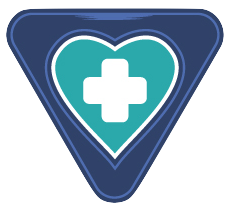Fundus photography is an innovative technique used to capture detailed images of the interior surface of the eye, particularly the retina. This method plays a critical role in identifying early signs of diabetic retinopathy, a serious eye condition that affects individuals diagnosed with diabetes. If left undiagnosed and untreated, diabetic retinopathy can lead to severe
Diabetes
Rybelsus, an innovative medication that contains semaglutide, has revolutionized the management of type 2 diabetes. As an oral tablet, it is vital to understand both the proper usage of Rybelsus and its accompanying dietary recommendations for optimal effectiveness. This article explores the significance of adhering to specific food guidelines to enhance its efficacy while managing
For individuals diagnosed with type 1 diabetes, being unwell presents unique obstacles, particularly in maintaining stable blood glucose levels. Unlike those without diabetes, whose bodies can naturally increase insulin secretion in response to stress and illness, individuals with type 1 diabetes lack this vital mechanism. When illness strikes, not only does the body experience an
Diabetic neuropathy is a common complication of diabetes, representing severe nerve damage resulting from prolonged high blood sugar levels. Among its various forms, peripheral neuropathy primarily targets the extremities—most notably the feet—often resulting in debilitating symptoms that can significantly impact a person’s quality of life. This article delves into the intricacies of diabetic neuropathy, its
Pregnancy can be a time of joy and anticipation, but for those managing diabetes, it requires meticulous planning and coordination with healthcare professionals. Effective management is crucial not only for the health of the expectant mother but also for the developing fetus. When a woman with diabetes becomes pregnant, the first and foremost step is
The growing healthcare landscape has made managing chronic conditions like type 2 diabetes and obesity a priority for many practitioners and patients alike. One of the drugs that stands out in this context is semaglutide, a glucagon-like peptide-1 (GLP-1) receptor agonist approved by the FDA for treating type 2 diabetes and for aiding weight management.
Gestational diabetes is a critical concern during pregnancy, impacting the health of both the mother and the unborn child. Accurate testing for gestational diabetes is essential for effective management. This article delves into the nuances of gestational diabetes testing, including preparation, testing methods, and the implications of test results. Gestational diabetes affects a significant portion
Managing health effectively requires a nuanced understanding of various physiological conditions. Among these conditions, hyperglycemia and hyponatremia stand out, primarily due to their distinct yet occasionally overlapping natures. Hyperglycemia signifies elevated blood glucose levels, while hyponatremia denotes decreased sodium levels in the bloodstream. Analyzing how these conditions intertwine can illuminate critical health challenges faced by
Chemotherapy, a cornerstone of cancer treatment, poses a myriad of challenges, one of which is the management of blood sugar levels. Patients undergoing this treatment—especially those already diagnosed with diabetes—need to be aware of the fluctuations that can arise due to the treatment’s side effects. Chemotherapy has the potential to elevate blood sugar levels in
